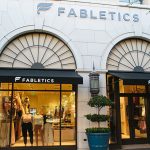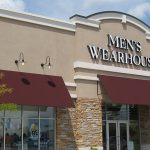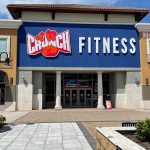Two sets of reports on Thursday may provide more fuel to the retail fire seemingly offsetting the impact of higher gas prices and the increasingly bad news coming out of Iraq. The good news on the job front due to record low unemployment figures, and brisk retail sales that were apparently fueled by fatter tax refunds and an earlier Easter, combined to put a surprisingly strong face on a U.S. economy that now appears to be in solid recovery.
The U.S. Labor Department on Thursday released its unemployment report for the week ending April 3, revealing that new applications filed for jobless claims declined by a seasonally adjusted 14,000 to 328,000, far below analysts estimates of 340,000 claims and the lowest level since January 13, 2001. The four-week moving average of unemployment claims was at its lowest level since November 2000. March also saw the creation of 308,000 new jobs for the month, highest number of new jobs created in a month in four years.
Further supporting the strength of the economy, retailers on Thursday reported strong comparable store sales gains across the board, with only four of the 34 retailers we track monthly recording negative comps and many reversing the sharp declines of a year ago when the Easter move to April impacted most retailers sales.
While Easter remained in April this year, its earlier date was credited with pushing sales into March. But unless West Marine and PacSun are new destinations for that special Easter outfit, retail as a whole appears to be maintaining its strength from January and February.
The International Council of Shopping Center-UBS sales report, which is based on a survey of 74 chains, reflected an average 7.0% same-store sales gain for the month of March ended April 3, the biggest monthly year-on-year gain since April 2000. ICSCs chief economist, Michael P. Niemira, had forecast a 6.5% increase for the month. March 2003 comp store sales had declined 0.2%.
The comp store energy also prompted a number of retailers to increase sales and earnings guidance for the fiscal first quarter, with some noting that consumers were buying more product at full-price rather than waiting for sales. Perhaps the waiting game on discounting that the retailers won at Christmas has had a long-term positive effect on the shoppers psyche.
Shoe Carnival was one of the few decliners for the month and was forced to lower its estimates for the quarter as the company pointed to cooler weather in the last four weeks of the five-week reporting month as the primary driver of slower traffic and lower sales.
We would also expect that SCVLs reduced reliance on all-store BOGOs has had an impact on the top line in the near-term, but may have a positive impact on margins in the long-term.
SCVL reported that sales for March increased 3.7% to $56.6 million from sales of $54.6 million in the year-ago period. Comparable store sales decreased 4.9% for the month on top of an 11.2% drop in March last year. Total footwear comps declined 5.2%, with only Childrens reporting positive sales comps, up in low single-digits.
Mens and Womens Athletics were both down in low single-digits. Womens non-athletic footwear was down in the “low teens”. Accessories comp sales were up low single-digits.
The retailer is now forecasting a one to three percent comp store sales decline for April. First quarter EPS is now estimated to be in the range of 31 cents to 35 cents per share, down from SCVLs forecast just last month of EPS in the 43 cents to 47 cents per share range. Earnings in Q1 last year were 39 cents per diluted share.
Inventories at quarter-end are estimated to be “flat” to last year on a per-store basis.
Conversely, Famous Footwear reversed its fortunes from the year-ago month, posting a 9.0% comp store sales gain for March versus a 10.6% decline last year.
Total sales for March this year increased 10.6% to $112.8 million compared to $102.0 million for the same period last year.
Management said they had sales increases in “nearly every category”, helped by “good weather conditions versus last year” and the earlier Easter. In Athletics, the company pointed to “continued strength in fashion athletics and a renewed interest in key performance athletic categories such as trail running and basketball”.
The family footwear chain is now in positive comp sales territory for the year, more than offsetting the February decline. Same-store sales were up 4.7 % for the YTD period.
The Mall, in general, continued to post strong results in the recovery and the Specialty guys continue to lead the results, with apparel specialty chains posting an average increase of 8.8% for the month versus the year-ago month.
Pacific Sunwear saw comps at its PacSun unit jump another 13.5% for the month on top of a 6.8% gain in the year-ago month. The d.e.m.o. format stores reported a same-store sales gain of 3.5% for March on top of a whopping 35.2% gain in March last year.
At PacSun, comps for guys were up in low double-digits and girls were up low single double-digits. Footwear comps were again up more than 20% in March. Sneakers and sandals were said to be “very strong”. Accessories were up in the “high teens”. Spring categories were all up in double-digits. Excluding weaker sales of fall product, girls comps would have been up 6.0%.
PSUN feels that guys will outperform girls in the first half of the year.
Total sales for Pacific Sunwear increased 22.8% in the period to $103.8 million from $84.5 million for the year-ago month. PSUN raised its fiscal first quarter earnings guidance to 16 cents a share, up from its previous estimate of 14 cents per share and a 60% increase over EPS of 10 cents in Q1 last year.
The Buckle also got into the act of double-digit comp store gains, reporting a 14.2% increase in same-store sales for March versus a 3.1% decline last year. Total sales increased 18.4% to $38.1 million from sales of $32.2 million in the corresponding five-week period ended April 5, 2003.
The ICSC report indicated that the department stores are again capturing some of that strong mall traffic as the sector saw average comps rise 6.0% for the month.
Only The Bon-Ton turned in a negative month against last year in the department store group as all others reversed the year-ago negative results. The luxury segment again outpaced the balance of the group as Neiman Marcus, Nordstrom and the Saks Fifth Avenue.
In the mid-market, it was Kohls that posted the lone decline for the month, off 0.9% for March. JC Penney led the group with a double-digit gain for the month against a mid single-digit decrease in March last year.
The discount sector as a whole up was up 6.3% for the month, with Stein Mart and Costco leading the group with double-digit gains. Value City was the lone decliner here, off 2.1% for the month on top of a 7.4% decrease in the year-ago month.
ICSC is forecasting a 5.0% to 5.5% comp store increase in April for the all chain stores.
>>> The renewed energy hear has consumers buying more goods and companies putting more people back to work. Looks like the tax breaks are working for now. Will the consumer remain upbeat???
Tax cuts appear to working their way into the economy, fueling optimism among retail CEOs that their businesses will remain healthy, according to the latest findings of the NRF Executive Opinion Survey, a monthly index by the National Retail Federation. But the strong retail results for March are not reflected in the Retail Sector Performance Index that was pegged at 58.3% for the month, down 450 basis points from Februarys record figures, but still more than 16 full percentage point higher than last March.
The Index, or RSPI measures retail executives evaluations of a number of core retail performance metrics and is based on a scale of 0% 100%, with 50% equaling normal.
While the survey results appear to run counter to the actual March results, it may be reflective of the timing of the survey, which is conducted prior to results for the month. We can only expect that the numbers would be even better now after the CEOs reported their numbers.
The Operations Index, which takes into account employment and inventory, came in at 52.5%, up 250 basis points from the 50.0% in February, and was more than 10 percentage points higher than March 2003.
Retailers surveyed were still optimistic about traffic and sales in February, but the ratings, while significantly higher than a year ago were both off 20 percentage points from the February results. The one improvement in the Current Demand Index — the average of sales and traffic — was in the average transactions per consumer line, which rose 250 basis points from February. Still, the Current Demand Index was up more than 17 percentage points from the year-ago month.
A key positive was found in the Pricing Index, which would indicate that pricing pressure is at a minimum.
The six-month look ahead Demand Outlook, which came in at 55.5%, was 380 basis points lower in March than the 68.8% record figure in February, but again was still more than 21 percentage points higher than the year-ago figure.
The NRF seemed to indicate that other outside influences are causing the CEOs to temper their short and long-term outlook.
“The summer months could prove more challenging for retailers as gas prices continue to rise,” said Tracy Mullin, NRF President and CEO. “Rising gas prices represent an additional tax on consumers incomes by costing them billions of dollars that could be spent elsewhere.”













